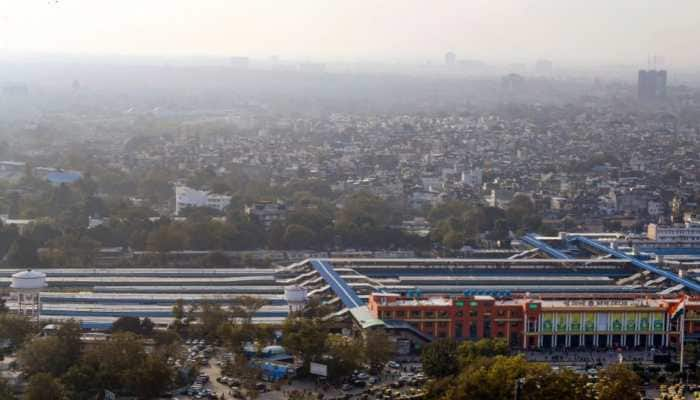Diwali 2024: How To Spot Adulterated Sweets During Festive Season? DNA Explains
The extent of adulteration makes it increasingly difficult to distinguish between the real and the fake sweets.
Trending Photos
)
As the festive season lights up India, there's a pressing warning that cannot be ignored: some unscrupulous traders are mixing dangerous additives into popular festive treats. Before you buy sweets for Diwali, here’s a look at some alarming reports that shed light on how adulterants are contaminating items such as milk products, oil, and ghee. The extent of this adulteration makes it increasingly difficult to distinguish between the real and the fake. In today's episode of DNA, Zee News explains how to spot adulterated sweets during the festive season.
Watch Full Episode Here
अबकी दिवाली..सबसे खतरनाक मिलावट वाली !
बांग्लादेश में गूंजा योगी का नारा...'बंटेंगे तो कटेंगे'
अवैध मस्जिदें गिराएंगे तो देश में गृहयुद्ध हो जाएगा ?
देखिए DNA LIVE @Anant_Tyagii के साथ#DNA #Diwali2024 #YogiAdityanath #BangladeshCrisis #RashidAlvi https://t.co/UiOyEhGbEh— Zee News (@ZeeNews) October 26, 2024
The Truth Behind Synthetic Ingredients
Artificial Mawa (Khoya)
Mawa is the foundational ingredient in many festive sweets, yet reports reveal that around 80% of the mawa sold during this season is adulterated. Synthetic additives and even starch are often used to bulk up the mawa, making it unsafe for consumption.
Painted Sweets
Perhaps even more shocking is the addition of chemical-based dyes and even wall paint to give sweets their vibrant colors. The same paint used for decorating walls is sometimes used to color sweets, posing severe health risks for consumers.
The 'Supply and Demand' Benefit – Not for the Consumers
The festive season brings high demand for sweets and dairy products, which unfortunately attracts profit-driven adulterators. Prices of mawa range between ₹200 and ₹500 per kilogram, depending on quality. But if the milk and process are consistent, why the price difference? The answer lies in the use of cheap, harmful substitutes.
Fake Products Are Everywhere
Reports from across India indicate that adulterated products are being made and sold in every state. In some places, artificial mawa and sweets are crafted, while in others, synthetic colors and dyes are added to sweets to enhance their appearance.
Health Risks of Adulterated Products
The health implications are dire: the chemicals used in these sweets can cause severe internal damage. Imagine consuming sweets coated in wall paint – it’s akin to ingesting poison. According to Dr. M. Wali, a renowned physician, these additives can lead to severe digestive issues, especially for those with weaker immune systems.
How to Identify Adulterated Products
The question remains: how can you identify these harmful products? Here’s a simple home test you can perform to check if mawa or paneer is adulterated:
1. Place a small amount of mawa or paneer in a test tube or glass.
2. Add a little water and heat the mixture.
3. Drop a small amount of iodine into the mixture. If it turns blue, the product is adulterated.
If it stays brown, the product is likely safe.
Overly Vibrant Sweets? Be Cautious!
If a sweet appears overly bright or colourful, it’s a warning sign. Excessive or unnatural coloring typically indicates the presence of hazardous chemicals. By performing this simple test, you can help protect your health and that of your loved ones.
What Happens to Confiscated Adulterated Products?
Do you know the fate of adulterated sweets and mawa? Food inspectors bury these products six feet underground to prevent them from entering the food chain. Their rightful place is not in your stomach but in the ground, ensuring public health is protected.
As this festive season unfolds, let’s celebrate responsibly by being vigilant about what we consume.
Stay informed on all the latest news, real-time breaking news updates, and follow all the important headlines in india news and world News on Zee News.
Live Tv







)
)
)
)
)
)
)
)
)
)
